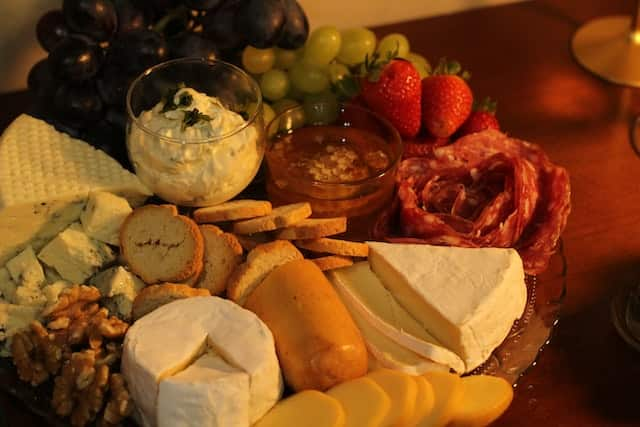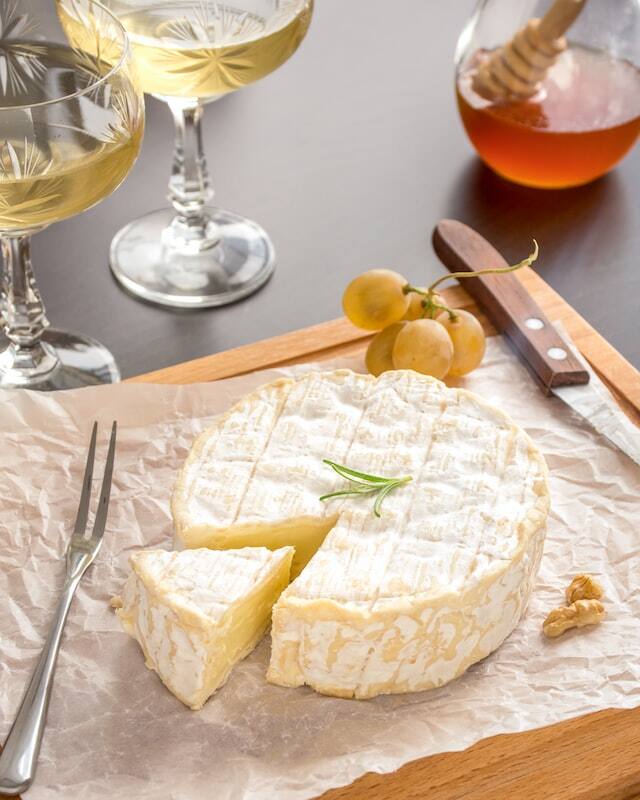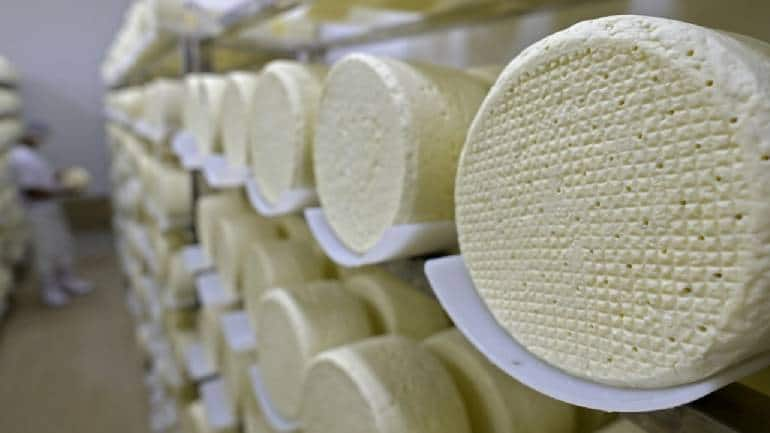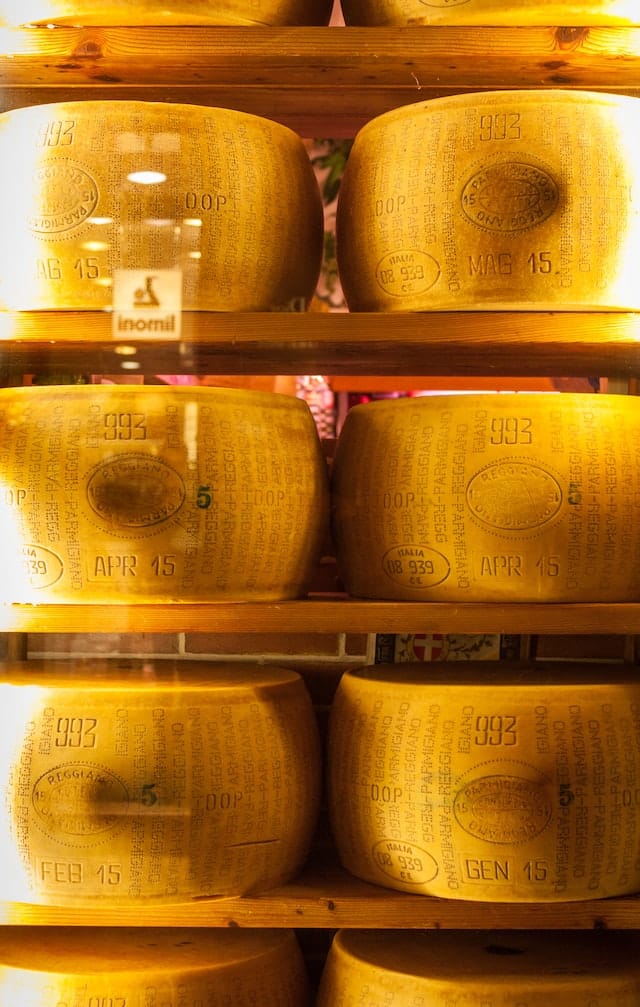



The 2022 World Cheese Award picked Le Gruyère surchoix, entered by a Swiss cheesemaker as the world’s best cheese; in second place was a Gorgonzola Dolce, a soft, blue buttery cheese made by De'Magi from Italy.
The judges picked these two from a blind tasting of 4,434 cheeses from 42 countries. Kase Cheese, an artisanal cheesemakers from Chennai, won a Bronze for Lavender Fields; while Mumbai-based Eleftheria Artisanal Cheese & Butter won a Silver for Eleftheria Brunost and Gold for Eleftheria Moony at the 2022 World Cheese Award.
 Eleftheria cheese table
Eleftheria cheese table
Let’s look at some of the world’s cheesiest cities.
Chicago (USA): Lawnstarter compared 180 cities in the US and declared Chicago 2022’s best cheese city with an overall score of 50.91, followed by Modesto (California) with 42.62 score and San Francisco in the third place with 41.54 score. Oozing with high-quality queso, Chicago, the Windy City, has earned a new nickname - The Cheesiest City in America.
Amsterdam (The Netherlands): The country has been making cheese for eons, with cheese-making equipment dating from 200 B.C. uncovered by archaeologists. Gouda, with its exceptionally tangy and distinctive crumbly texture, is as Dutch as a cheese can get. Gouda is most commonly paired with Heineken during after-work drinks across the city every evening. Try Geitenkaas, a Dutch cheese made from goat’s milk; Maasdammer, a semi-hard Dutch cheese which is very similar to the Swiss Emmental (with its famous holes); Nagelkaas (literally meaning ‘nail cheese’); and Edam, which was the world’s most popular cheese for 400 years (from the 14th – 18th century) because of its famous red wax seal.
 (Photo: Waldemar Brandt via Unsplash)
(Photo: Waldemar Brandt via Unsplash)
Gruyere (Switzerland): Located in the canton of Fribourg in Switzerland, Gruyere lends its name to the firm yellow cheese with very few small eyes (holes) that won the 2022 World Cheese Award. The judges described the Le Gruyère surchoix, entered by Swiss cheesemaker Vorderfultigen and affineur (refiner) Gourmino, as a ‘really refined, hand-crafted cheese’ that melts on the tongue and has notes of herbs, fruits and leather. A cheese with a lot of taste and bouquet, that’s what the judges called it. A matured cheese, the gruyère is slightly crumbly and made from raw cow's milk.
 (Photo: Andrei Santiago via Unsplash)
(Photo: Andrei Santiago via Unsplash)
Paris (France): Charles de Gaulle was right: It was impossible to govern a country with 246 kinds of cheese. That’s all the French cheese that the French President could think of. But Parisian cheese does not begin and end with Brie. There’s goat cheese or fromage de chèvre at its glorious best in spring; Camembert de Normandie, one of 46 French cheeses boasting an appellation d'origine contrôlée (AOP), which protects its integrity; Comté, an Alpine cheese, that is regularly voted France’s favourite; bleu d’Auvergne, probably the first blue cheese made in France; and buttery Chaource, a double-cream cheese made in the Champagne and Burgundy regions.
 Camembert (Photo: Adana Eisagholian via Unsplash)
Camembert (Photo: Adana Eisagholian via Unsplash)
London (the UK): London, often, used to be called the Cheese Capital of Europe. London’s cheese scene includes an eclectic mix of British and foreign, traditional and avant-garde, rough and refined. Step into Paxton & Whitfield, the city’s oldest cheese shop that was founded in 1797; Neal Yard’s Dairy that keeps cheese from 70 artisanal cheesemakers on its shelves; La Froamgerie that sells 200 different types of cheese (shop’s signature Beaufort Chalet d’Alpage is the hottest selling). Other must-visit cheese shops are La Cave A Fromage and The Cheeseboard.
Tasmania (Australia): Tasmania might be Australia’s smallest state, but it packs a punch with wild abalone, wasabi, whiskey and, of course, the washed rind cheese. Here, the story of cheese began with cheddar but it all changed in 1992 when Jon Healy, a local, opened Pyengana Dairy Company and began making farmstead cheddar using an original 1885 recipe passed down from his grandfather. Try Grandvewe Cheese, a certified organic sheep dairy company that produces handcrafted cheeses, gelato and yoghurt. Grandvewe also runs “Australia’s smallest distillery” making vodka and gin from sheep whey. And Bruny Island Cheese which is made and matured using traditional techniques.
 (Photo: AFP)
(Photo: AFP)
La Mancha (Spain): Set in Central Spain, La Mancha was the setting for the adventures of the famous literary hero Don Quixote of La Mancha. Manchego cheese with its very pleasant flavour but slightly acidic taste is one of the most recognized and famous Spanish cheeses. Made of rich, fatty raw milk of the Manchega breed of sheep, the Manchego cheese is matured between 60 days and two years.
Emilia-Romagna region (Italy): Parmigiano Reggiano is a cheese of Emilia Romagna produced exclusively in the provinces of Parma, Reggio Emilia, Modena, Bologna (on the left of the Reno river), and Mantova (on the right of the Po river). Grana Padano, the ‘brother’ of Parmigiano Reggiano, is a semi-fat hard cheese left to age naturally over at least nine months, and sometimes for over 24 months. If you are headed to Romagna, the south-western portion of the region, try the classic piadina squacquerone e rucola and Formaggio di Fossa; the latter is matured for 30 days before being wrapped in cloth bags and placed in the pit (fossa). Raviggiolo is made in the valleys of the Apennine mountains of Romagna while Provolone Valpadana, a semi-hard pasta filata (spun paste) cheese, is produced only in the province of Piacenza.
 Cheese wheels stacked somewhere in Bologna, Italy. (Photo: Max Nayman via Unsplash)
Cheese wheels stacked somewhere in Bologna, Italy. (Photo: Max Nayman via Unsplash)
Waikato (New Zealand): With fertile soils and a temperate climate, the Waikato region is New Zealand’s dairy heartland and some award-winning cheeses made from cow, goat and sheep milk are created here. Try Vintage Waikato, rich and milky with a sweet finish, that won the gold medal at the 2020 New Zealand Cheese Awards and bronze at the 2019 World Cheese Awards held in Italy. Another famed Mercer cheese is Goat Waikato, a gold winner in the 2019 New Zealand Cheese Awards. Try Dutch-style gouda by Meyer Cheese that is crafted in a range of styles: from smoked, tasty and vintage, and comes in various flavours (cumin, garlic and chives and Italian herbs).
Podhale region (Poland): Podhale is famous for Oscypek, a traditional Polish scalded-smoked cheese, with a protected-designation-of-origin (PDO) status, manufactured from raw sheep's milk without starter cultures in the Tatra Mountains region of Poland. Shaped like a spindle, it has characteristic pattern imprinted by the carved wooden molds that give the cheese its final form. The forms are then placed in a brine-filled barrel for a night or two, after which they are placed close to the roof in a special wooden hut and cured in hot smoke for up to 14 days. Also try Redykołka cheese, or Bundz cheese, a kind of cottage cheese made from sheep’s milk.
Discover the latest Business News, Sensex, and Nifty updates. Obtain Personal Finance insights, tax queries, and expert opinions on Moneycontrol or download the Moneycontrol App to stay updated!
Find the best of Al News in one place, specially curated for you every weekend.
Stay on top of the latest tech trends and biggest startup news.